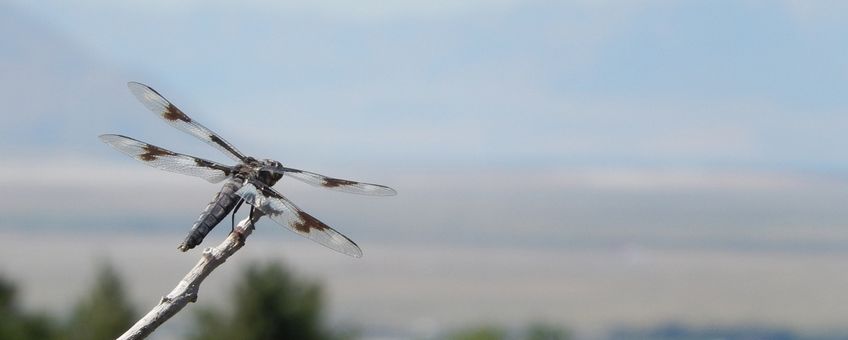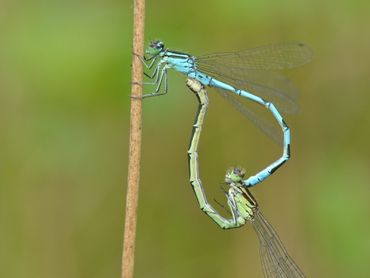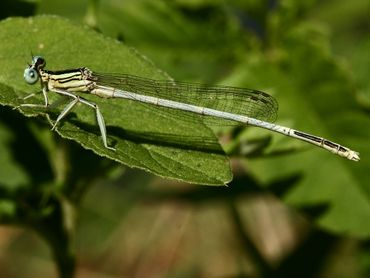
How are dragonflies doing worldwide?
Dutch Butterfly Conservation Adult dragonflies fly around and are easy to see and identify. Therefore, we know quite a lot about them in the Netherlands, but is that the same in other countries? This has just been examined and published. We often forget that the information on the occurrence of plants and animals in the Netherlands is very good compared to other countries. There are several portals such as Waarneming.nl, Telmee.nl and Tuintelling.nl, there is a central database, the NDFF, and there are monitoring programs for different groups of organisms, mostly organized through the NEM, the Network Ecological Monitoring. Dragonflies have received a substantial amount of attention for a long time in the Netherlands and Belgium. Some of the oldest books on dragonflies were published here. Later the youth organizations NJN and JNM stimulated the interest in dragonflies. Since 1999 there is a monitoring project for dragonflies in the Netherlands.
Adult dragonflies fly around and are easy to see and identify. Therefore, we know quite a lot about them in the Netherlands, but is that the same in other countries? This has just been examined and published. We often forget that the information on the occurrence of plants and animals in the Netherlands is very good compared to other countries. There are several portals such as Waarneming.nl, Telmee.nl and Tuintelling.nl, there is a central database, the NDFF, and there are monitoring programs for different groups of organisms, mostly organized through the NEM, the Network Ecological Monitoring. Dragonflies have received a substantial amount of attention for a long time in the Netherlands and Belgium. Some of the oldest books on dragonflies were published here. Later the youth organizations NJN and JNM stimulated the interest in dragonflies. Since 1999 there is a monitoring project for dragonflies in the Netherlands.
In a recent article, published in Bioscience, an overview of a large number of databases on dragonflies is presented.
For many countries very little data is available. For the Netherlands there were more than 3 million records in autumn 2019. In the UK (1.28 million) and Germany (1.67 million) this is already a lot less, especially when you consider that these countries are much larger than the Netherlands. Most other countries have far fewer records and that makes it difficult to determine how the different species of dragonflies are doing. This is a shame, especially as this also gives insight in how freshwater ecosystems are doing in general. Therefore, an initiative is started by a large number of people and organizations that study dragonflies around the globe, including Dutch Butterfly Conservation, to investigate how we can improve this and what we can learn from each other.

 For the collection of records we are dependent on volunteers, it is impossible to do this with paid professionals. Therefore, it is important to make sure it is easy to collect and share high quality data. As we do not only want to have information on (changes in) distribution but also abundance we need more than simple records. In the Netherlands we use standardized monitoring transects, the golden standard for abundance monitoring, but this does not seem feasible for many countries. Therefore, we need to come up with a new method to monitor abundance. By doing this coordinated and together we can avoid that we try to all figure out the same problems and we can share the tools we have. This is not only for the tools to record the sightings but also the analysis of the data. The experience we have with dragonfly monitoring in the Netherlands can also contribute to the protection of dragonflies elsewhere.
For the collection of records we are dependent on volunteers, it is impossible to do this with paid professionals. Therefore, it is important to make sure it is easy to collect and share high quality data. As we do not only want to have information on (changes in) distribution but also abundance we need more than simple records. In the Netherlands we use standardized monitoring transects, the golden standard for abundance monitoring, but this does not seem feasible for many countries. Therefore, we need to come up with a new method to monitor abundance. By doing this coordinated and together we can avoid that we try to all figure out the same problems and we can share the tools we have. This is not only for the tools to record the sightings but also the analysis of the data. The experience we have with dragonfly monitoring in the Netherlands can also contribute to the protection of dragonflies elsewhere.
More information
Text: Roy van Grunsven, Dutch Butterfly Conservation
Photos: Kars Veling (lead photo: eight-spotted skimmer (Libellula forensis)); Roy van Grunsven; Antoine van der Heijden
